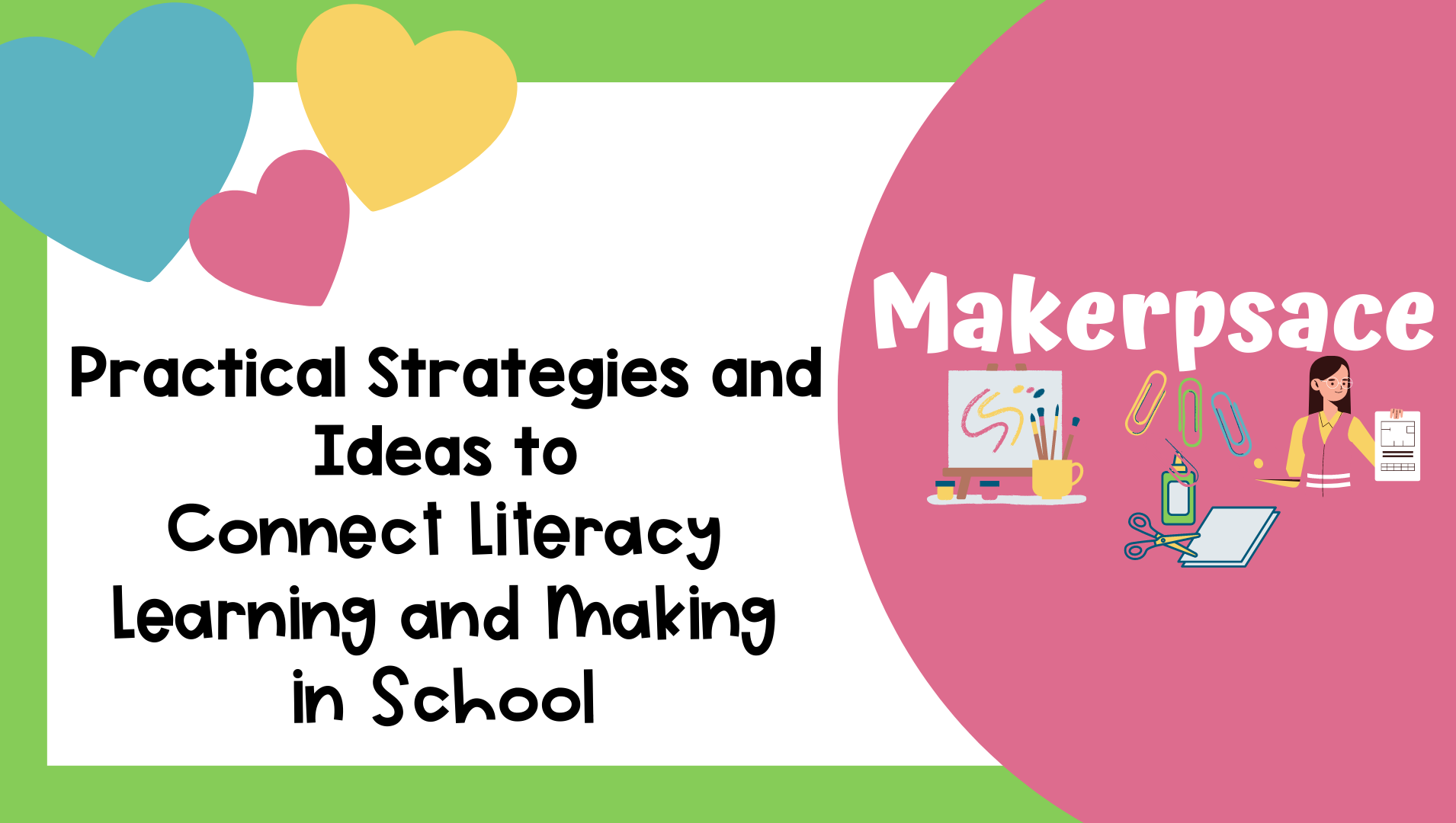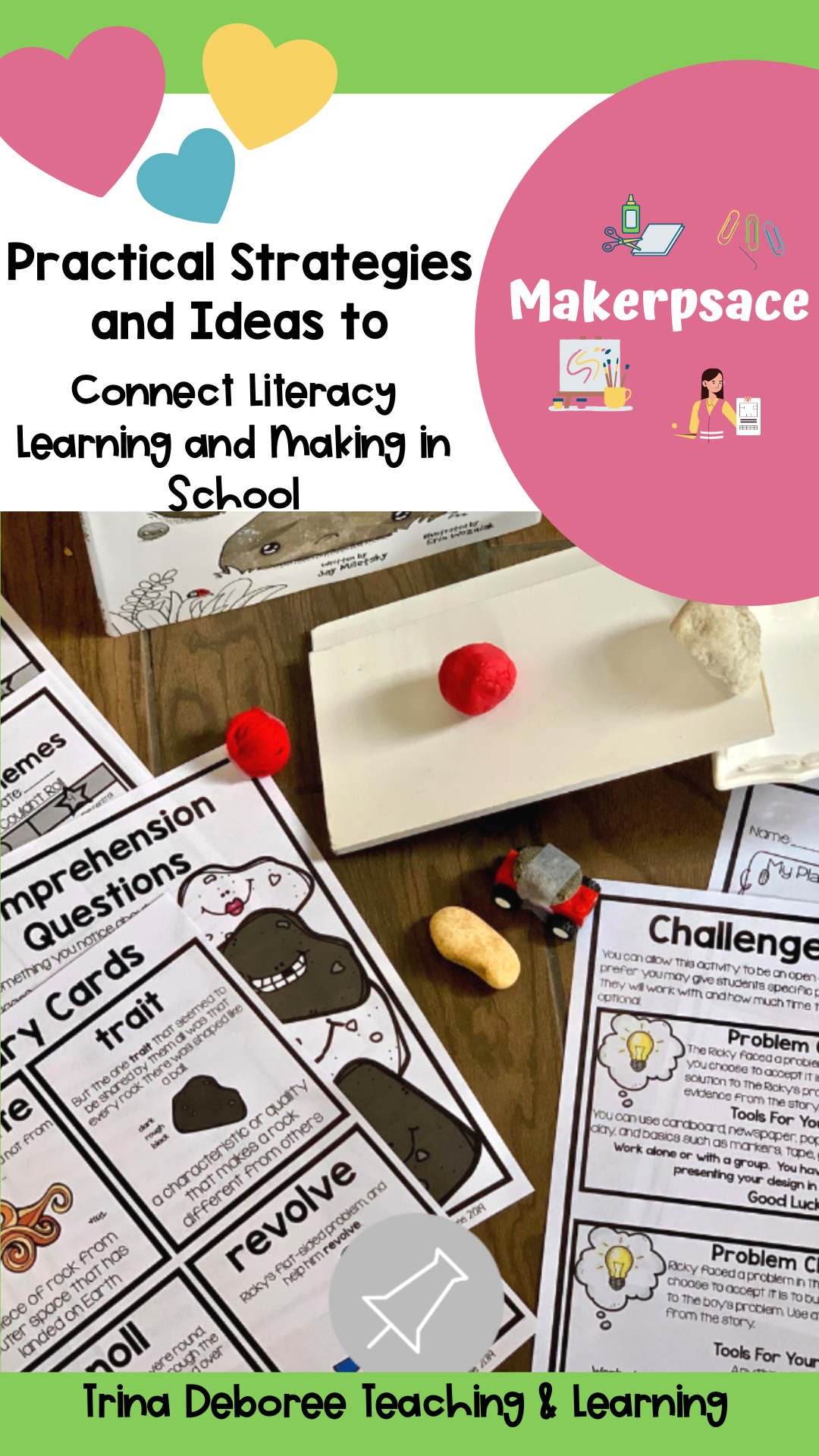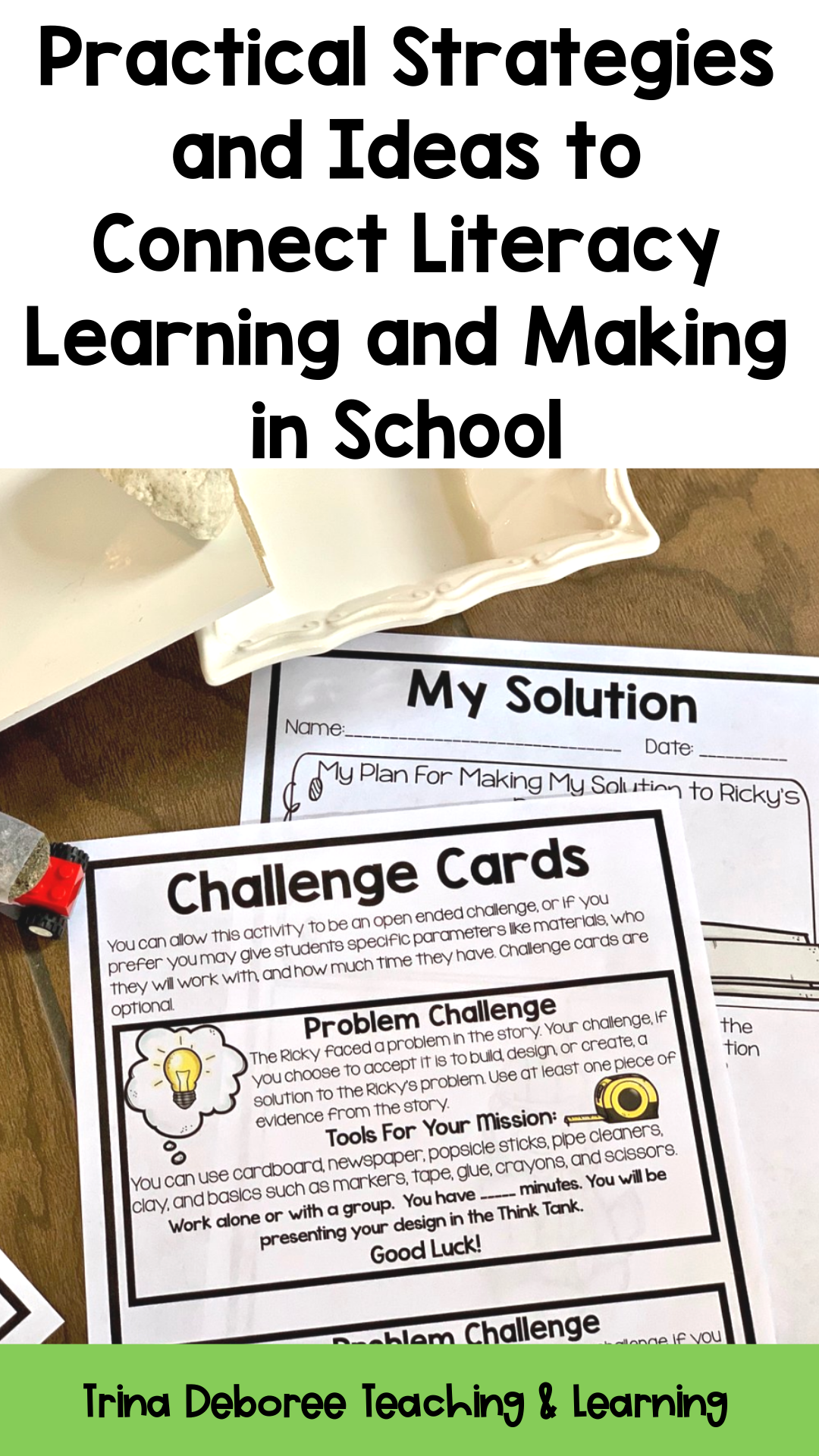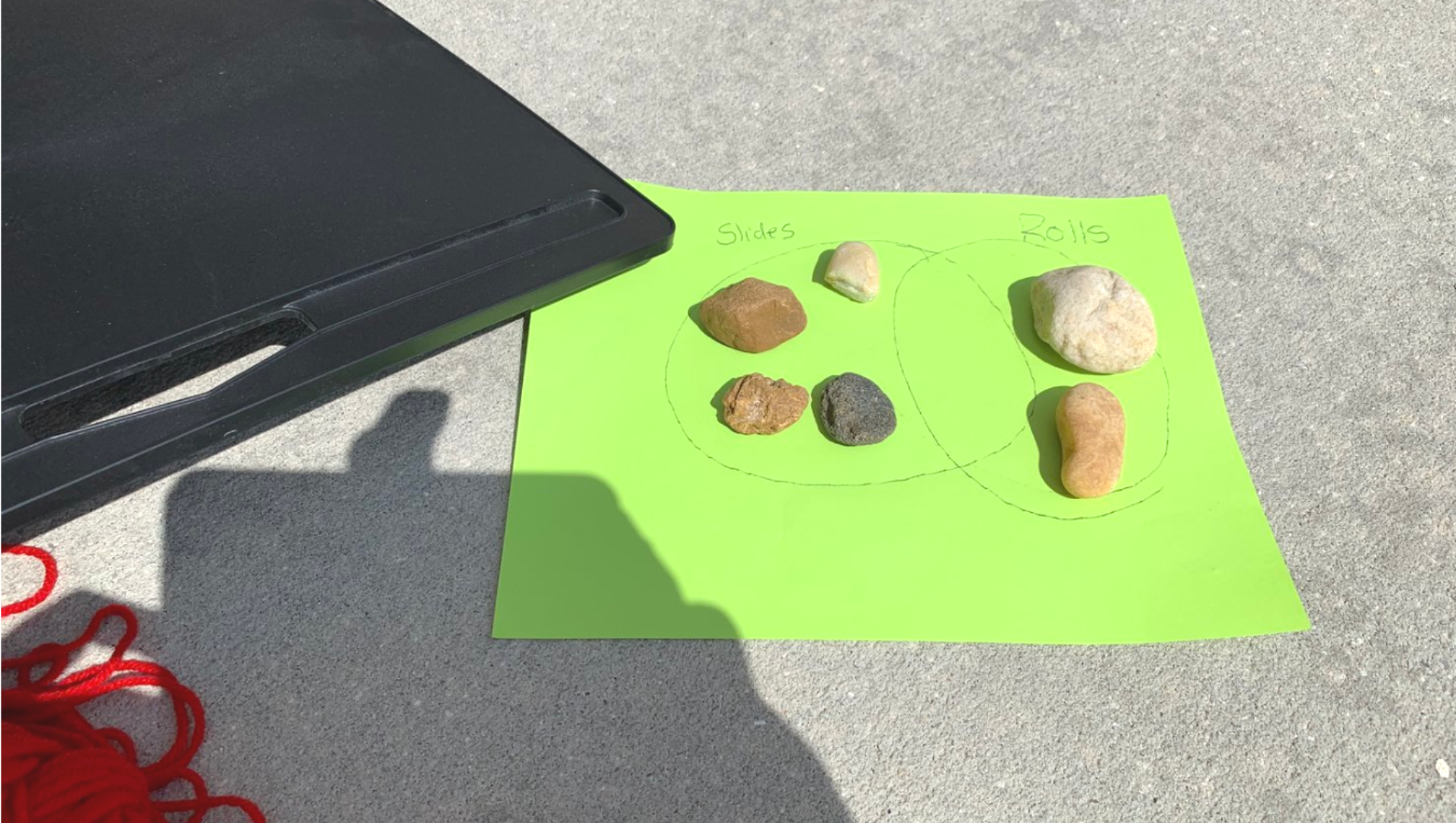Practical Strategies and Ideas to Connect Literacy Learning and Making in School
Student engagement is at the forefront of the maker movement and can be included in many different subject areas, but my favorite way to include Makerspace activities is by integrating literacy skills such as comprehension.
Responses to read aloud or close reading with a focus on solving the problems in stories is a unique look at the maker mindset and can benefit younger students and older students alike. The grade level doesn't necessarily matter.
A Closer Look at Student-Centered Learning with Close Reading
The idea of close reading seemed silly to me when I heard about it over a decade ago. I literally thought it meant you looked closely at the words. Hee hee.
Sometimes the words we use in education can grate on our nerves. We rarely call things what they are. Why not say a more in-depth look at literature or information? Why do you have to call it close reading?
Either way, I have since stopped laughing. I believe a deeper dive into text can be and is a truly magical experience. (I’m still not a fan of the title close reading, but I love the idea behind the words.)
When we take kids through a journey of text, it is important to remember, like most things we do and see; we don’t always get it the first time around. That’s the beauty of close reading. There are ample opportunities to discover things we didn’t notice the first time.
For instance, going back and looking at the point of view can be eye-opening to readers. We often read the words at a surface level, but when we think beyond the words and really imagine who is telling the story and how this impacts the events, we go beyond basic comprehension.
I love to talk about a shared experience with my kids. We then discuss what each person remembers. All the details. It is always amazing to us all how different the story is. I use that to explain the point of view. When students reflect and discuss how the story would be different or alike if told by another character, they are really invested in the broader aspects of understanding, and there are more positive attitudes toward the reading materials.
So yes, I have become a huge fan of close reading. I also love that you can use a shared text to cover multiple standards.
Oh, the possibilities!
The Integration of STEM Education In Literature
I am also a big fan of high engagement and making learning fun in a Makerspace environment where kids learn new skills and focus on making activities inside a maker classroom. So when I discovered makerspace, I was hooked. If you need more information on makerspace, check out my blog series beginning with 5 Astonishing Reasons Every Classroom Needs a Makerspace.
Here is an expert from 5 Astonishing Reasons Every Classroom Needs a Makerspace
A Makerspace is a metaphor for a unique learning environment that encourages tinkering, play and open-ended exploration for all” ~Laura Fleming, author of Worlds of Making
Makerspace mixes all aspects of STEM- Science, Technology, Engineering, and Math and sprinkles it with hands-on experiences, the design process, students' interest, imagination, and discovery. It truly can be engaging to the senses.
The beauty of encouraging hands-on learning is how this learning style is so impactful for children who think outside of the box. When you bring literature into the mix, you can also capture all learning styles and topics with a focus on design-based learning.
Immersing your students in maker activities and a potential challenge motivates them to create. Maker learning also helps students focus on social interactions even with limited time.
Tying maker challenges to standards allow them to learn in a unique discovery-type manner inside of a successful Makerspace. {It also gets admin off your back when they walk through and think you are having too much fun. (Is there any such thing when you are learning?! You may even recommend that your admin looks into the Makerspace Movement. It is super powerful!}
So I recently created a new makerspace moment in literature with a loose connection to STEM. I know the value of integrating all the subjects meets best practices. Yet, sometimes I think it is essential to focus on the problem-solving and critical thinking skills that makerspace invoke. When you can incorporate math and science even better.
Makerspace Moment In Literature
In my newest makerspace moment. I took an adorable story about a rock that cannot roll. Ricky the Rock that Couldn’t Roll.
This story is perfect for an introduction to the characteristics of rocks. It is also a great story to express the theme of overcoming obstacles with perseverance.
Creating an engineering response with planning, designing, creating, reflecting, and revising also brings a high level of engagement into your close reading activity.
Steps in the Makerspace Moment in Literature Process:
After going through multiple standards (I always include a variety of standards from which to choose), we are ready for the makerspace magic.
2. The next thing we do is sort rocks by characteristics (a 2nd grade science standard). They quickly realize that many rocks can’t roll, just like Ricky. They see that if a rock has a flat side, they tend to slide down but not roll.
3. Now, the fun begins! This is where students are given the challenge to create a modification to the rock to help it roll properly down an incline. The solutions are endless.
Making close reading more engaging for kids brings literature and informational text alive. Are you ready to bring making into your daily basis?
Leave a comment telling me how you plan to bring excitement into your reading block.








